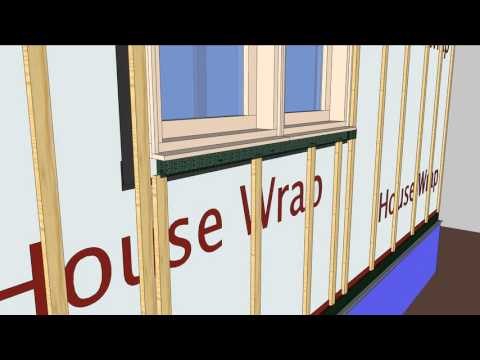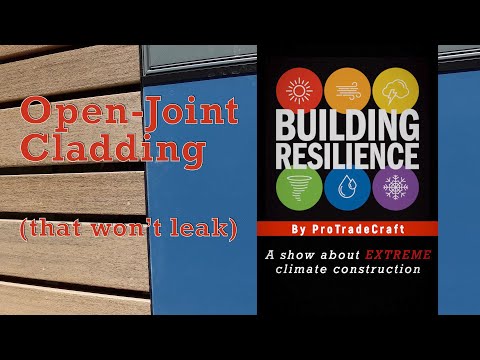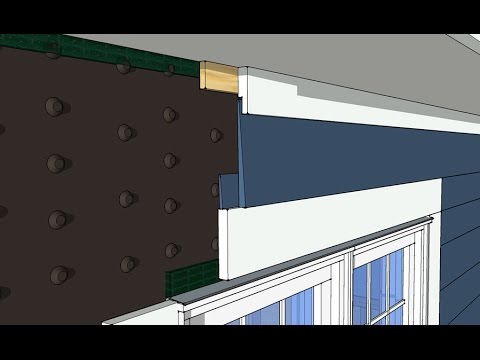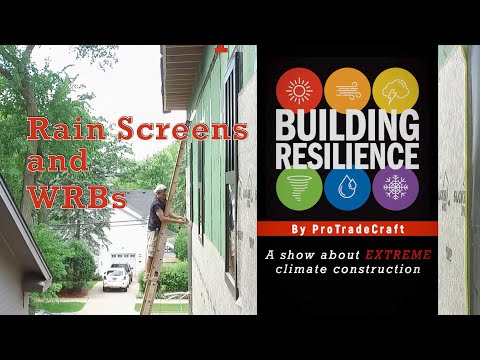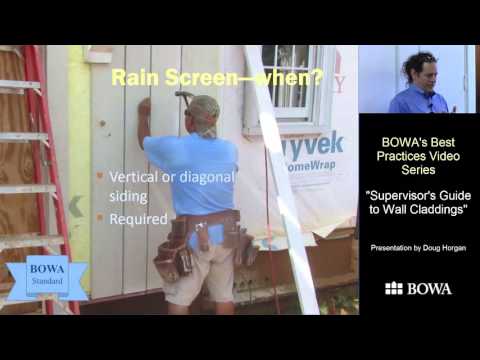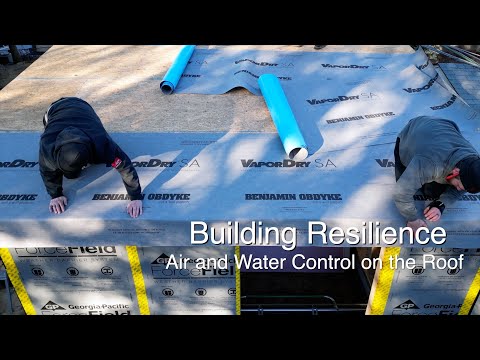Sam Hagerman, of Hammer & Hand, explains the importance of a rain screen wall and points out the energy and durability detailing on a Passive House in Seattle, WA.
OFFICIAL TRANSCRIPT:
Hi, I'm Sam with Hammer and Hand at the Madrona Passive House. I'm back in the same spot as I was in the previous video when we talked about the Roxul mineral wool insulation. You can see that it Is now installed over the whole building.
There's a four inch layer, two 2-inch layers actually, with their seams staggered so we don't get any thermal bypass through a seam all the way back to the sheathing.
We've taken care to return our flashing to the first layer of insulation, rather than all the way back to the sheathing to make sure that we don't have a thermal bridge going all the way back to the sheathing.
Then we've got our nailers, which go right over the face with these strut-like fastenall fasteners—rigid fasteners that penetrate the sheathing and go into the framing an inch and a half minimum. They form a rigid strut every two feet on center. They secure the battens to the building and they allow very little deflection up and down. Essentially, this carries the load of the siding all the way back into the frame of the building. The whole job is done by these black fasteners right here.
We've got another layer of furring running horizontally so we can attach our siding, which is going to be run vertically. That's why we have two layers of battens on this building.
This allows for a really robust ventilation gap—minimum 3/4 inch. We've maintained our gap down here at the bottom and have put some insect screen across here so we can't get any bugs crawling underneath. Sometimes we leave that screen out in an urban location, but more and more, as we get concerned about different types of bugs coming north, especially termites here in the Pacific Northwest, we are worried more and more about putting short-circuits into any path that they might find entry into the building.
This is something that we've emphasized a lot as we got into high performance building—this ventilated siding system, it's often referred to as rainscreen. The real important point here is that getting air to move behind the siding increases the drying capacity of the whole wall assembly.
We're relying on this mineral wool insulation to do water management, This is a hydrophobic surface, water just kind of beads and runs off, so any water that gets behind the siding will get it a little wet, but most of it will just run off. We're not worried about the rock wool getting wet seasonally because we have such nice ventilation space, there's air movement behind this siding—probably hundreds of air changes per hour through natural convection and solar drive.
This surface is going to dry out at the minimum seasonally. And that's what we want to see in this wall assembly, if the moisture content goes up, it goes up in the winter when it gets wet and then the moisture content comes back down in the summer so you see a nice sine wave develop in terms of the moisture content.
This robust resilient wall assembly is made possible by the ventilation space which is again, a crucial thing. Because when you build a Passive House, which is virtually airtight, and really thermally robust, there's virtually no ventilation through this wall so we have to develop strategies and build them into the envelope to increase the drying capacity.
In an old house you have natural ventilation—the walls have a tremendously large drying capacity because there's so much air movement through them. When you short-circuit that air movement in the interest of saving energy, you have to develop another passive strategy to get air moving across this exterior surface to be able to draw any moisture out of the assembly. So, a key feature to this house (and all passive buildings) is to have a ventilated cladding system.
I wouldn't build a passive building without a ventilated cladding system. It's that important.
You can see the insulation comes across the face and here is a piece that returns back into the window.
The cladding in this window is held short, the window frame is actually behind this line about an inch and a half. So we've over insulated onto the frame of the window itself.
The cladding is manufactured so that it is short on the edge of the frame, we place the window in the center of this wall assembly bringing the insulation out onto the edge of this window and then we'll run a jamb piece here which can attach into these edges of these rainscreen pieces and die down into the pan, which is essentially the finished sill of the assembly.
So you have legs and a head on the jamb piece and what we have here is a fully ventilated, extremely robust siding system featuring an air gap behind the cladding.
—Sam Hagerman is president of Hammer & Hand in Portland, OR and Seattle, WA
